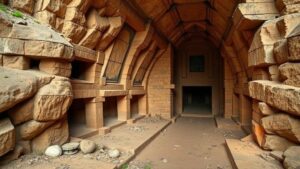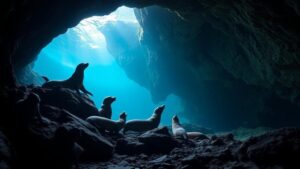Exploring Madagascar to document rare lemur species in their natural habitats.
Exploring Madagascar: Documenting Rare Lemur Species in Their Natural Habitats
Madagascar, the world’s fourth largest island, is renowned for its unique biodiversity, particularly its lemur species. Approximately 90% of the wildlife found here is endemic, meaning it cannot be found anywhere else on Earth. With over 100 distinct lemur species, ranging from the tiny mouse lemur to the impressive indri, Madagascar attracts researchers and wildlife enthusiasts alike. This article aims to explore the various lemur species, their habitats, and the importance of conservation efforts in protecting these remarkable primates.
The Diversity of Lemurs
Lemurs are a group of strepsirrhine primates that are exclusively found in Madagascar. They play a crucial role in their ecosystems, primarily through seed dispersal. Here are some notable lemur species:
- Indri (Indri indri): The largest living lemur, reaching up to 3 feet in length. Known for its distinctive, loud calls that resonate through the forests.
- Ring-tailed lemur (Lemur catta): Easily recognized by its long, striped tail, it lives in troops and is one of the most iconic species.
- Mouse lemurs (Microcebus spp.): These are the smallest primates in the world, some weighing as little as 1 ounce, making them comparable to a common mouse.
Each species has adapted uniquely to its environment, with fascinating behaviors and social structures. The indri, for example, lives in monogamous pairs and establishes vocal territories, while ring-tailed lemurs exhibit complex social hierarchies, often led by dominant females.
Key Locations for Lemur Observation
To document these species in their natural habitats, several key locations across Madagascar serve as prime spots for observation:
- Andasibe-Mantadia National Park: Located just 140km east of Antananarivo, this park is famous for the indri and has a rich biodiversity of flora and fauna.
- Avenue of the Baobabs: Not directly a lemur habitat but nearby, it offers unique landscapes and opportunities to see lemurs while exploring.
- Berenty Private Reserve: A well-established reserve that provides excellent opportunities to see ring-tailed lemurs and other wildlife in their natural environment.
These locations are not only significant for observing lemurs but also for understanding their habitats, which range from lush rainforests to dry deciduous forests. Each environment supports different species and adaptations.
Conservation Issues and Efforts
While Madagascar is a biodiversity hotspot, it faces significant threats to its lemur populations. Deforestation, driven by agriculture and illegal logging, is the primary threat, with about 80% of Madagascars original forests lost since the 1950s. According to a 2021 study, the islands deforestation rate is one of the highest globally, with nearly 15 million hectares of forest cover lost over 20 years.
Conservation efforts are vital to protecting these species. Organizations such as the Wildlife Conservation Society and Madagascar Biodiversity Partnership are working tirelessly to conserve habitats and engage local communities in sustainable practices. Examples of their work include:
- Creating protected areas to limit habitat destruction.
- Useing reforestation projects to restore ecosystems.
Plus, ecotourism initiatives provide economic incentives for locals to preserve their natural heritage while educating visitors about conservation needs.
How to Engage with Nature
For those looking to explore Madagascar and contribute to conservation efforts, here are actionable takeaways:
- Visit National Parks: Plan your journey to include visits to the key national parks mentioned above.
- Participate in Citizen Science: Join programs that engage tourists in collecting data on lemur sightings and behaviors.
- Support Local Communities: Engage with local artisans and guides who promote sustainable tourism practices.
Exploring Madagascar offers a unique opportunity to witness some of the rarest primates in their natural habitats. By understanding their ecological roles and supporting conservation efforts, we can contribute to ensuring the survival of these extraordinary species for future generations.



